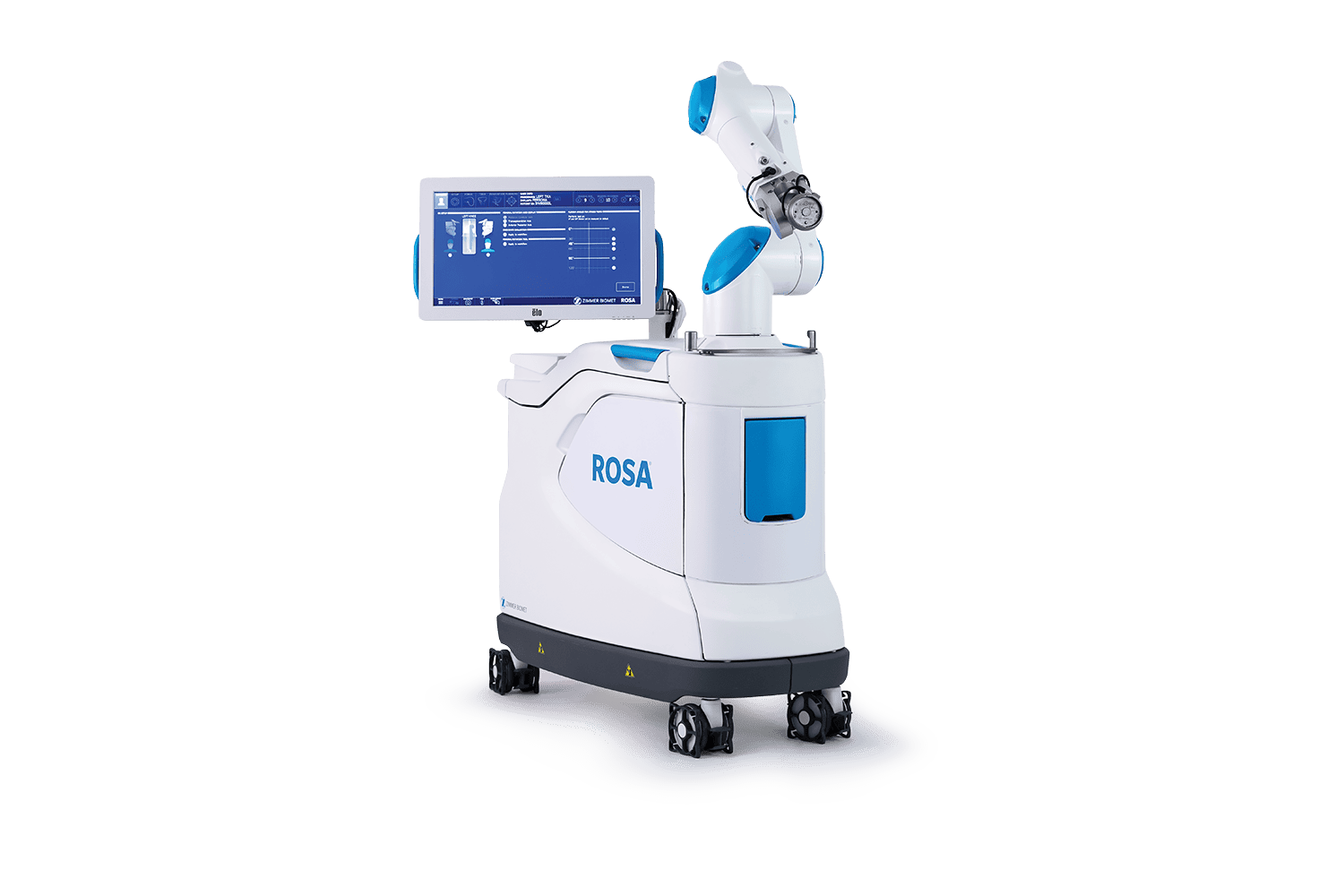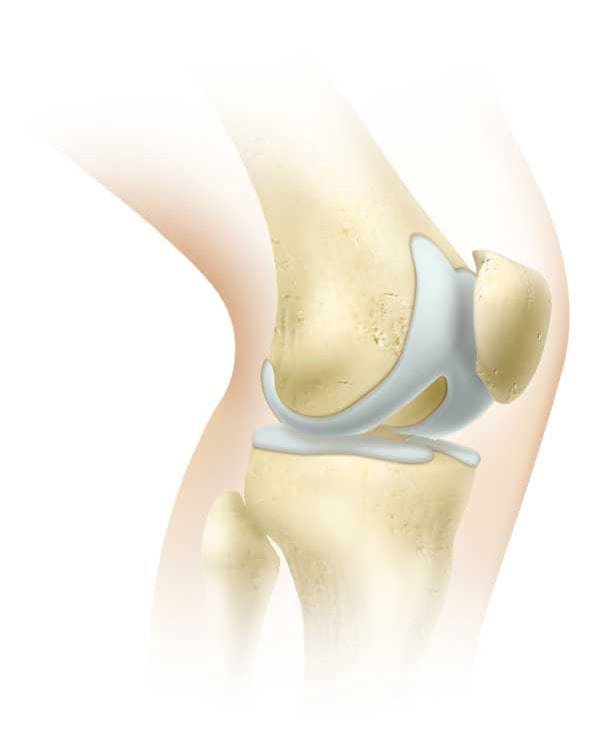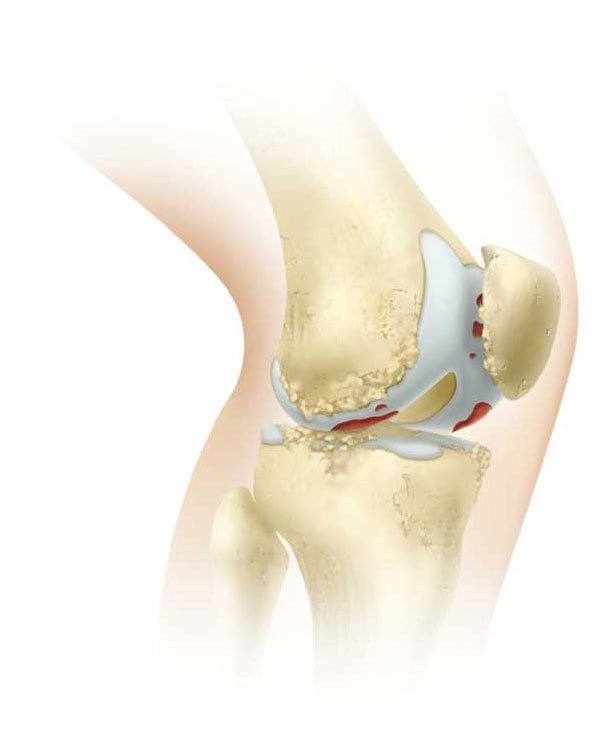Robotic Knee Replacement Surgery: The Future Is Here
Knee replacement surgery assisted by robotics might sound like something out of a sci-fi movie, but it’s very much a reality today. Surgeons are now incorporating robotic technology into procedures that require extreme precision—such as knee replacements—enhancing their ability to deliver accurate and effective results.

Do I Need a Knee Replacement?


There are several reasons why a person might need to get a knee replacement. The most common reasons involve conditions that cause pain, limited mobility, and overall joint dysfunction. Here are some of the main reasons:
1. Osteoarthritis
Osteoarthritis (OA) is the most common reason for knee replacement surgery. OA occurs when the cartilage that cushions the bones in the knee joint gradually wears away over time. This causes pain, swelling, stiffness, and decreased range of motion. As the cartilage wears down, bone-on-bone friction can occur, making movement painful and difficult. For individuals with severe OA who no longer find relief from medication or physical therapy, knee replacement can provide a significant improvement in quality of life.
2. Rheumatoid Arthritis
Rheumatoid arthritis (RA) is an autoimmune disorder that causes the body’s immune system to attack the lining of the joints, leading to inflammation and joint damage. Over time, RA can severely affect the knee joint, causing pain, swelling, and deformity. When conservative treatments like medications or lifestyle changes no longer control symptoms, knee replacement may be necessary to restore function and alleviate pain.
3. Post-Traumatic Arthritis
Post-traumatic arthritis can develop after an injury to the knee, such as a fracture, ligament tear, or meniscus damage. These injuries may lead to joint instability, abnormal wear of cartilage, and eventually arthritis. If conservative treatments like rest, physical therapy, or medications aren’t effective, knee replacement surgery may be recommended to restore joint function.
4. Knee Deformities
Some people are born with knee deformities or develop them over time, such as bowed or knock-knees, which can put excess pressure on certain parts of the knee joint. These deformities can lead to pain and limited function. In cases where other treatments haven’t helped, a knee replacement can help realign the joint and improve mobility.
5. Severe Knee Pain & Reduced Mobility
For individuals who experience constant, severe knee pain and find it difficult to perform daily activities like walking, climbing stairs, or standing up, knee replacement surgery may be the best option. When pain persists despite medications, physical therapy, or lifestyle changes, and the knee is severely affecting overall mobility, surgery can provide long-term relief and restore independence.
6. Knee Instability or Loss of Function
For some people, knee joint instability or a feeling of the knee “giving way” during movement can be debilitating. This may be caused by severe joint degeneration or injury. When the knee becomes unstable and non-functional, and when nonsurgical options don’t work, knee replacement can help restore balance and strength, allowing for more stable and pain-free movement.
7. Infections or Tumors
In rare cases, infections or tumors affecting the knee joint may require a knee replacement. Infections can cause significant damage to the knee, and tumors can affect the bone structure. If these conditions can’t be managed with other treatments, surgery may be necessary to remove the damaged tissue and restore knee function.
Ultimately, the decision to undergo knee replacement is made after careful evaluation by a doctor, considering the patient’s symptoms, medical history, and overall health. Knee replacement surgery is typically considered when non-surgical treatments no longer provide relief, and when pain or disability is significantly affecting the patient’s quality of life. Contact Dr. Dobzyniak today to find out if a knee surgery is right for you.
What Is Robotic Knee Surgery?
Robotic knee surgery doesn’t mean a robot is in full control of the procedure. Instead, we use a robotic-assisted arm to help perform critical parts of the operation. This technology provides an extra level of accuracy in areas requiring the steadiest hand and the most precise movements, essentially acting as an advanced surgical tool.
Using CT scans, the robotic system creates a 3D model of the surgical site, helping guide the procedure by performing key functions, including:
- Balancing the implant for an optimal fit
- Preparing the bone
- Placing the implant
- Ensuring proper implant alignment

Benefits of Robotic Knee Surgery
Robotic-assisted knee surgery is already proving to be a game-changer in the medical field, offering significant benefits in multiple areas:
Lower Long-Term Costs
Patients undergoing robotic knee replacement often experience fewer complications, reducing the likelihood of follow-up hospital visits. Additionally, the quicker recovery time allows individuals to return to work and daily activities sooner. Since robotic-assisted procedures are minimally invasive, the risk of infections and other post-surgical complications is also lower.
Improved Patient Outcomes
Studies indicate that patients who opt for robotic knee surgery are less likely to be readmitted to the hospital and typically require less rehabilitation than those who undergo traditional knee replacement. The robotic arm’s ability to remove diseased bone tissue with greater precision also contributes to improved healing and recovery rates.
Higher Patient Satisfaction
Patients appreciate the ability to return to their normal routines faster, leading to greater overall satisfaction with their medical care. The precision of robotic-assisted surgery means fewer errors, better implant alignment, and greater comfort post-surgery. Combining cutting-edge robotic accuracy with the expertise and personal touch of Dr. Dobzyniak ensures the best possible outcome.
Is Robotic Knee Replacement the Better Option?
Yes—research has shown that robotic-assisted knee surgery delivers superior results compared to traditional methods. By minimizing trauma to the bone and surrounding tissues, robotic technology enhances accuracy and leads to better long-term outcomes.
Wondering if knee replacement surgery is right for you? Schedule a consultation with us today. Our team will help determine the best treatment for your needs.
What to Expect
Here’s what you can expect with a typical robotic knee replacement surgery with Dr. Dobzyniak and his team.
Before Surgery
Before undergoing robotic knee replacement surgery, our medical team will guide you through a series of preparatory steps to ensure the best possible outcome. First, Dr. Dobzyniak will conduct a thorough evaluation, which may include X-rays, MRIs, or CT scans to assess the condition of your knee and create a personalized surgical plan. You’ll also discuss your medical history, current medications, and any potential risk factors.
In the weeks leading up to surgery, we may advise you to make lifestyle adjustments, such as engaging in low-impact exercises to strengthen the muscles around your knee, maintaining a healthy diet, and stopping smoking if applicable. We may also ask you to temporarily discontinue certain medications, such as blood thinners, to reduce the risk of complications during surgery. Additionally, arranging for assistance at home after surgery—such as a family member or caregiver—can help make your recovery process smoother.
During Surgery
On the day of your robotic knee surgery, you’ll receive anesthesia, which may be general (putting you to sleep) or spinal (numbing the lower half of your body while you remain awake). Once the anesthesia takes effect, Dr. Dobzyniak will begin by using a robotic-assisted system to map out your knee joint in detail. This advanced imaging technology allows for highly precise planning and ensures the best possible fit for your knee implant.
During the procedure, the robotic arm assists Dr. Dobzyniak by providing real-time feedback and guiding bone preparation with remarkable accuracy. The robotic system helps remove damaged bone and cartilage while preserving as much healthy tissue as possible. Once the area is prepared, Dr. Dobzyniak carefully places and aligns the knee implant, using robotic precision to ensure optimal positioning and balance.
Robotic-assisted knee surgery is typically less invasive than traditional knee replacement, which can lead to reduced blood loss, less trauma to surrounding tissues, and a faster recovery time. After the implant is secured, the surgical site is closed, and you’ll be moved to a recovery area.
After Surgery
Immediate Post-Surgery Recovery
You’ll be taken to a recovery area where our medical staff will monitor your vital signs and ensure you’re comfortable as the anesthesia wears off. Many patients are encouraged to start moving their knee as soon as possible—sometimes on the same day—to promote circulation and prevent stiffness. You may experience some swelling, discomfort, and mild pain, which can be managed with prescribed medications, ice therapy, and elevation of the leg.
Most patients stay in the hospital for a short period, often just one or two days, before being discharged to continue recovery at home. In some cases, outpatient robotic knee surgery may allow you to go home the same day. Our medical team will provide detailed instructions on wound care, pain management, and activity levels to help ensure a smooth healing process.
The Rehabilitation & Recovery Process
Physical therapy is a crucial part of your recovery. Within days of surgery, you’ll begin working with a physical therapist to regain mobility, improve strength, and restore function in your knee. Initially, exercises will focus on gentle movements and weight-bearing activities, gradually progressing to more challenging tasks as you heal. Many patients can walk with the assistance of a walker or cane within the first week and transition to walking independently over time.
Most people can resume light daily activities within a few weeks, but a full recovery typically takes around six weeks to three months, depending on individual progress. By this time, you should notice significant improvements in pain relief and mobility. However, for optimal results, it’s important to follow the doctor’s and your physical therapist’s recommendations closely.
Long-Term Recovery & Returning to Normal
While you may feel much better after a few months, full recovery from robotic knee replacement can take up to a year. As the knee continues to heal, you’ll gradually regain strength, flexibility, and stability. Many patients find they can return to work, drive, and engage in low-impact activities like swimming or cycling within a few months. However, high-impact activities such as running or jumping may need to be avoided to protect the implant.
Robotic knee surgery is designed to improve your quality of life by reducing pain and increasing mobility. With commitment to rehabilitation and following post-operative care guidelines, you can look forward to a more active and pain-free future. We will schedule follow-up visits to monitor your progress and ensure that your new knee functions properly, helping you get back to enjoying life with confidence.
By knowing what to expect before, during, and after your knee surgery, you can feel more confident and prepared for the journey ahead. Our medical team will provide you with personalized guidance every step of the way, ensuring you have the best possible experience and outcome.
Risks of Robotic Knee Surgery
While robotic-assisted knee surgery offers many advantages, like increased precision and potentially faster recovery, it still carries some risks, just like any surgical procedure. Understanding these risks can help you make a more informed decision about your treatment.
General Surgical Risks
Robotic knee surgery involves incisions and implant placement, so it comes with general risks such as:
- Infection: Any surgery carries a risk of infection, though minimally invasive robotic techniques may reduce this compared to traditional knee replacement.
- Blood Clots: Post-surgery, there is a risk of developing blood clots in the legs (deep vein thrombosis) or lungs (pulmonary embolism), which is why movement and prescribed blood thinners may be recommended.
- Bleeding and Swelling: Some patients may experience excessive bleeding or persistent swelling, which may require additional care.
- Anesthesia Complications: Reactions to anesthesia, such as breathing problems, nausea, or allergic responses, can occur, though they are rare.
Procedure-Specific Risks
Robotic technology improves surgical accuracy, but it still presents some risks:
- Nerve or Blood Vessel Damage: The robotic arm operates with precision, but there is still a small chance of unintended injury to surrounding nerves or blood vessels.
- Implant Misalignment or Loosening: Although robotic assistance helps with implant placement, no procedure is 100% perfect. Over time, the implant could shift, loosen, or wear down, potentially requiring revision surgery.
- Stiffness or Limited Mobility: Some patients may experience stiffness or difficulty regaining full range of motion, which may require extensive physical therapy or additional interventions.
While these risks exist, robotic knee surgery has been shown to provide high success rates and improved outcomes for many patients. A thorough consultation with Dr. Dobzyniak can help determine if this is the right option for you based on your health, lifestyle, and surgical goals.
